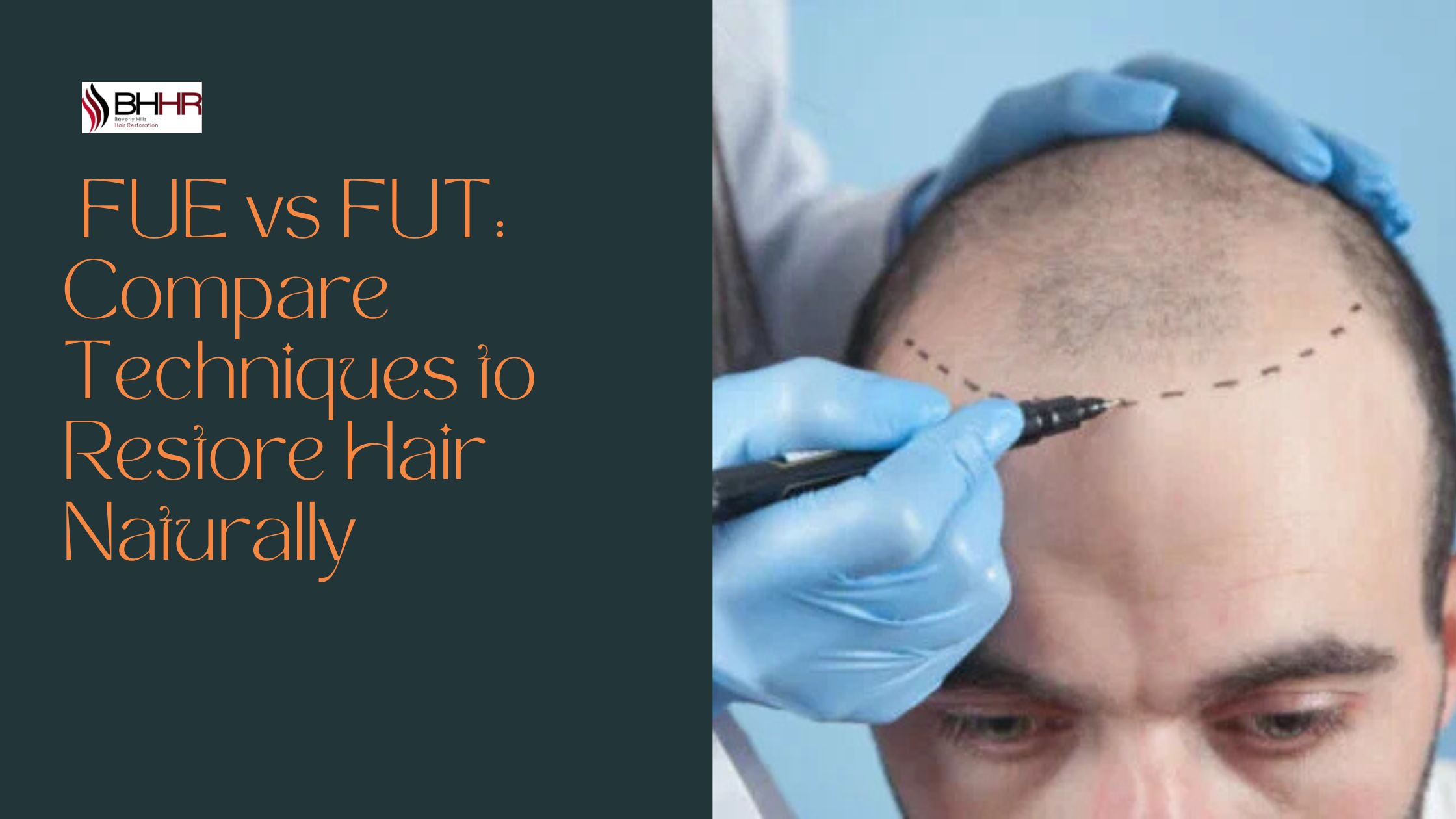Hair loss effctive challenging experience, affecting both self-confidence and appearance. Thankfully, modern hair restoration techniques provide effective solutions. Two of the most widely used methods are FUE and FUT. Choosing between them can be confusing, especially if you’re not familiar with the differences. In this guide, we’ll compare FUE vs FUT, explain how each technique works, and help you determine which approach may be best for restoring your hair naturally.
Understanding Hair Transplant Basics
Hair transplantation treatment involves relocating healthy hair follicles from a donor area—usually the back or sides of the scalp—to thinning or balding regions. The goal is to restore hair in a natural-looking pattern. While FUE and FUT achieve the same end result, the method of harvesting follicles sets them apart.
What Is FUE Hair Transplant?
FUE stands for Follicular Unit Extraction. This minimally invasive procedure involves removing individual hair follicles from the donor area used a tiny punch tool. These hair follicles are then implanted the recipient area in natural patterns.
Benefits of FUE:
- Minimal scarring with tiny dot-like marks
- Faster healing and shorter downtime
- Suitable for short hairstyles
- Less post-procedure discomfort
- Flexible placement of individual grafts
FUE is often preferred by patients who want a discreet recovery and the ability to wear short hair without visible scars.
What Is FUT Hair Transplant?
FUT, or Follicular Unit Transplantation, also known as strip method, involved removing a strip of scalp from the donor area. This strip dissected into individual follicular units under a microscope, which are implanted into the balding areas.
Benefits of FUT:
- Allows harvesting a larger number of grafts in one session
- Cost-effective for extensive hair loss
- Proven technique with high success rates
- Donor scar hidden under longer hair
- Suitable for patients needing maximum coverage
FUT is ideal for patients with advanced hair loss treatment who require a significant number of grafts in a single procedure.
FUE vs FUT – Key Differences
| Feature | FUE | FUT |
|---|---|---|
| Extraction | Individual follicles | Strip of scalp tissue |
| Scarring | Tiny dot scars | Linear scar |
| Recovery | Shorter, minimal downtime | Slightly longer due to sutures |
| Number of Grafts | Limited per session | Higher graft yield |
| Hair Length | Works well with short hair | Better for medium/long hair |
| Cost | Usually higher per graft | Often lower per graft |
Comparing FUE vs FUT helps patients understand which method aligns with their hair goals, lifestyle, and budget.
Recovery and Healing Time
Recovery is an important consideration when comparing FUE vs FUT.
- FUE: Healing is faster because tiny extraction points close quickly without stitches. Most patients resume the normal activities within a few days.
- FUT: Recovery is slightly longer since a linear incision requires sutures. Stitches are usually removed within 10–14 days, and patients avoid strenuous activity during this period.
Both procedures are generally safe, but understanding the recovery timeline can help you plan your procedure and daily activities.
Natural Results – FUE vs FUT
Both FUE and FUT offer natural-looking hair restoration when performed by a skilled surgeon. Since the same follicular units are transplanted, the final result is typically very similar.
- FUE: Offers flexibility in placing individual grafts, which can help refine hairline design.
- FUT: Provides strong grafts for extensive coverage, often suitable for patients needing large-scale restoration.
With either method, the experience and expertise of your surgeon are critical to achieving realistic and satisfying results.
Cost Comparison
Cost is often a factor when deciding between FUE vs FUT.
- FUE: Labor-intensive and time-consuming, making it slightly more expensive per graft.
- FUT: Allows for more grafts in one session, making it generally more cost-effective for extensive hair loss.
Consulting with a specialist will provide an accurate estimate tailored to your individual hair restoration needs.
Who Is an Ideal Candidate?
FUE Candidates:
- Early to moderate hair loss
- Short hairstyles or preference for minimal scarring
- Willing to invest in a premium procedure
- Desire faster healing
FUT Candidates:
- Advanced or extensive hair loss
- Medium to long hairstyles
- Patients seeking a cost-effective solution
- Need for a high number of grafts in one session
Evaluating your hair loss pattern, goals, and lifestyle will help you determine which procedure suits you best.
Tips for Choosing the Right Hair Transplant
- Assess the Extent of Hair Loss: Mild thinning may be best suited for FUE, while larger areas may require FUT.
- Consider Hair Length: FUE is ideal for short hair, whereas FUT works better if you maintain longer hair.
- Budget Considerations: Compare costs and choose a method that aligns with your financial plan.
- Select an Experienced Surgeon: The skill and expertise of your surgeon are critical for optimal results.
Scheduling a appointment with a professional hair restoration specialist ensures personalized guidance.
Conclusion
Both FUE and FUT are effective techniques for restoring hair naturally. FUE provides minimal scarring, quicker recovery, and flexible placement of individual grafts. FUT, on the other hand, allows for higher graft yields, is cost-effective for large areas, and is ideal for advanced hair loss.
Choosing between FUE vs FUT depends on your level of hair loss, hairstyle preference, and budget. For the personalized treatment plan and expert care, consult with Palm Desert Beverly Hills Hair Restoration to determine the best technique to achieve your hair restoration goals naturally.
